One of the things that makes filming wildlife so difficult is the ability raise enough funds to be able to film out on location with a full crew for the period of time required.
The Wildlife Film Network appreciates that one of the things that makes filming wildlife so difficult to undertake is the ability raise enough funds to be able to film out on location with a full crew of people, using high specification equipment, for long periods of time.
So… rather than simply keeping all of your membership fees ourselves, the WFN is going to do something completely different to other organisations and put at least 50% percent of your monthly membership fees into a ‘Production Kitty’.
The WFN will then use this ‘kitty’ to collaboratively produce, independent, self-funded, wildlife television documentaries and films, for broadcast. These productions will be produced through the WFN’s own independent television production company by the WFN members themselves. In this manner, the Production Kitty will eliminate the often difficult and very time consuming process of trying to find external funding to cover the cost of a production.
The Wildlife Film Network currently has no ‘Pro’ members, contributing £0.00 a month to the Production Kitty.
The Production Kitty presently stands at…
£10,000
Log in to view a list of productions the WFN is working on
” The Wildlife Film Networks’ kit list “
Below is a list of video equipment and audio recording equipment that is owned outright by the Wildlife Film Network. This equipment is available for use / hire by any WFN full member for the use of making a wildlife production. The equipment listed below does not have to be used to produce the production, if a higher specification of equipment is deemed necessary by the crew producing that production.
This is also not a definitive list of all of the equipment we have, as there is simply too much to list here. We have enough equipment to run a self-contained tented base camp for up to 10 people on location for a long period of time; including such items as a generator for battery power, water purification systems and full cooking facilities; as well as the expected equipment such as cook tents, accommodation tents and storage tents.
For more information about anything to do with using / hiring the Wildlife Film Network film equipment; please use the Contact Us form here.
Camera Equipment
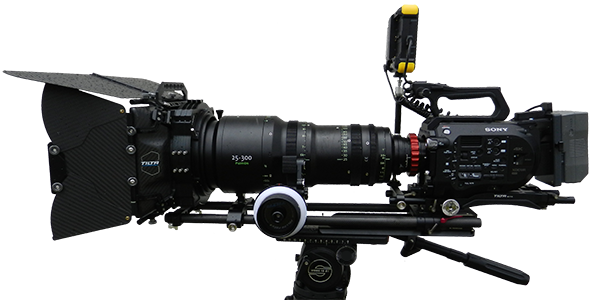
Sony PXW-FS7
The PXW-FS7 is one of Sony’s best ever selling broadcast quality cameras. Its ergonomic form factor plus its lightweight, portable design means it is easy to carry up hills in search of wildlife!
Key specs include 4K (4096 x 2160) resolution, 180fps, 600Mbps internal and raw external recording. It also boasts an incredible 14 stops of dynamic range giving it an ultra cinematic look and a native sensitivity of 2000 ISO, meaning fantastic low light performance too.
It’s not hard to see why it is quickly being adopted by companies such as the BBC; Channel 4 are ditching their more expensive cameras in favour of the FS7 simply because it matches or even beats them for performance and at a fraction of the cost.
The recording format is XAVC, which was first used in the PMW-F55 digital cinema camera. As with the F55, 4K (4096 x 2160) 60p 4:2:2 10-bit recording is possible at a high bit rate of 500Mbps or 600 Mbps. QFHD (3840 x 2160( and HD (1920 x 1080) resolutions.
We have a lot of hands on experience with the FS7 as we have been using this camera for several year’s now. We are confident that this is simply one of the best choices of camera for the Wildlife Film Network, as this is an outstanding camera.
• The photo above shows our Sony FS7 4K Cine camera fitted with a Fujinon ZK25x12 Cine Lens (Previously sponsored by Fuji Film); our Tilta 6×6 Matt Box (MB T-06) & our Tilta Follow Focus (FF T-05); and our Atomos Shogun Flame (4K Field Recorder) all sitting on our Sachtler S18 Tripod.
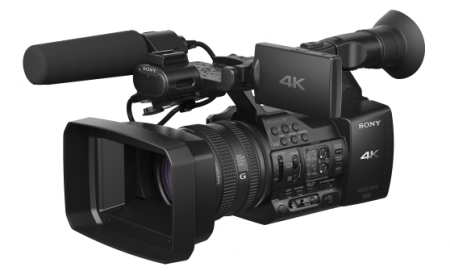
Sony PXW-Z100
The Sony Z100 makes for a wonderful B-camera, when filming wildlife (and for a many people would be an excellent choice for your principle camera) as it not only films in 4K but also sports a internal 600mm lens (35mm equivalent). This camera is now a little dated, having been superseded by several newer models; however, all of the newer models have a much shorter lens range (some, half the length (300mm)) so we have decided to continue to use this camera due to its internal long lens system.
Again the recording format is the same as the Sony FS-7 (XAVC) which was first used in the PMW-F55 digital cinema camera. As with the F55, 4K (4096 x 2160) 60p 4:2:2 10-bit recording is possible at a high bit rate of 500Mbps or 600 Mbps. QFHD (3840 x 2160( and HD (1920 x 1080) resolutions.
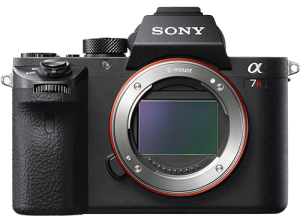
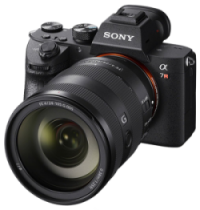
Sony Alpha 7Rii
The Alpha 7Rii was a game changer for film-making. With the worlds first back-illuminated 35mm full-frame CMOS image sensor with 42.4 megapixels, the Sony A7Rii takes image resolution, sensitivity (up to ISO 102400) and speedy response to new heights.
It packs incredible 4K video features into a tiny package, enabling ultra wide angle views for landscape vistas and facilitating it’s unrivalled low light performance.
The Fast Hybrid AF system´s dense extra-wide focal plane phase-detection AF coverage keeps a subject in sharp focus entirely throughout the frame, while 5-axis image stabilisation reduces blur which otherwise tends to affect hand-held shots. With an insane maximum ISO of 409,600 and incredible noise handling, this camera enables you to keep filming later into the night and start earlier in the morning than any other camera currently available – ideal times of the day to film the wildlife. Furthermore, the Sony A7Rii has 4K video recording capabilities, as well as slow-mo up to 120fps and a dynamic range of 14 stops, meaning it’s a perfect combo with the Sony FS7.
• The Photo above shows the Sony A7Rii fitted with a Sony 70-300mm G-series Lens.
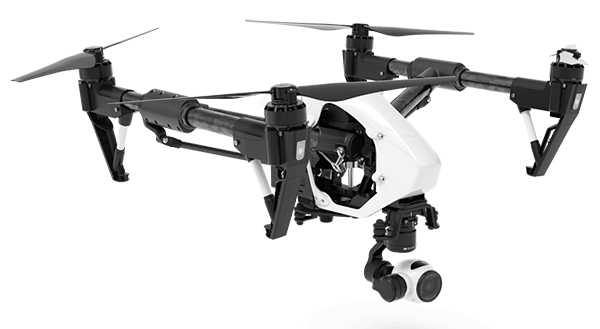
DJI Inspire Quadcopter
Ariel film and photography use to be the luxury of documentary filmmakers with a serious budget… but not any more.
We decided to update our Quadcopter from a DJI Phantom 4 to a DJI Inspire (Although we still have the DJI Phantom 4) Our main reason for doing this is the DJI Inspire can be operated by two different remote controllers at the same time; therefore (unlike the DJI Phantom where you had to fly the Quadcopter whilst steering it to point the camera in the correct direction) the DJI Inspire can have one operator controlling the flight of the Quadcopter, whilst a second operator independently steers the camera to film your intended subject.
The DJI Inspire lifts the art of ariel camera operation to a whole new level. The carbon fibre chassis lifts up out of the way of the camera offering a true 360 view of your surroundings. Whilst filming in 4K a live full colour video image is streamed back to you live, so you can see at all times exactly just what you are filming; and with a minimum flight height of 1 meter and a maximum flight distance of 5000 Meters, with the DJI Inspire, the sky is the limit, literally.
We are sure you will agree that whilst working within the CAA Rules and guidelines the DJI Inspire will be an extremely useful tool in any documentary film-makers toolbox.
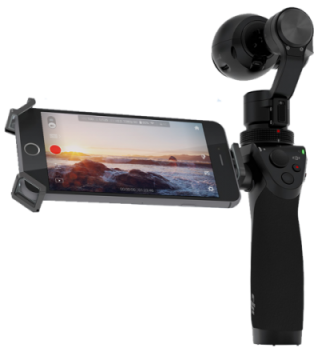
DJI Osmo 4K
Whilst now the original model of the list, we still prefer it to some of its later replacements. The Osmos’ fully automatic electrically operated self-leveling gimbal supports and amazing fixed focus 4K camera head. The unit is fully self-supportive offering truly ´bump free´ flowing footage which continuously levels horizons to anyone operating it.
Not only this, but it also has the option to move the camera head in any direction by a simple operation of ´touch and drag´ via the attached video monitor… effectively turning the whole system into a remote controlled video headed camera, and operating via Bluetooth technology this can be operated up to 100 meters away from the operator.

Konova K7 Slider
One of the camera movements often used in television / film production is a slide. This moves the camera slowly and smoothly from point A to point B. These points are not often far apart, and the movement is often used to show peace and tranquillity or the passing of time. (For example: The images often created are, slowly moving through trees back-lit by bright sunshine or the camera appearing from behind an object, to fully reveal a wider view)
The K7 slider is the longest Konova manufacture at 1.5 meters in length, and offers a variety of different lengths and camera movements. The slider (normally being used horizontally) can also be used vertically and at 45 degrees offering many different camera movement angles, replacing other items such as a small camera jib.
With our K7 slider we also have Konova´s computer controlled movement controller to precisely control the position of the camera on the slider, whilst 3 different speed motors allow the camera movement to be fast, medium and slow. We also have a `Pan & Tilt´ bar which rotates the camera head slightly as it slides from point A to Point B whilst keeping the centre of the frame targeted on a single central point / item.
• The photo above shows our Sony A7Rii fitted to the K7 Slider.
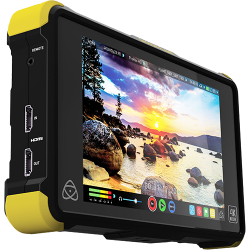
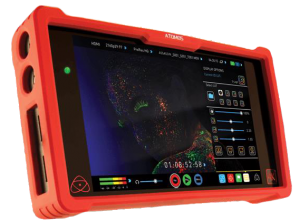
Atomos Video Monitors
Atomos manufacture a wide range of Video Monitoring and video recording equipment for use in all genera´s of production, from high-end cinematic rigs to DSLR single camera operators.
Atomos allow for off-camera recording in 4k, utilising multi HDMI connection, XLR Audio input, Time-Laps Recording, Pre-roll, and other monitoring functions like LUT´s, Waveform, Vectorscope, Focus Peaking, RGB Parade and False Colour.
Furthermore, they make a fantastic ‘directors monitor’ when a director/producer etc. wishes to view the image being recorded by the camera, whilst not being stood immediately next to the camera. This is extremely useful when filming in remote locations.

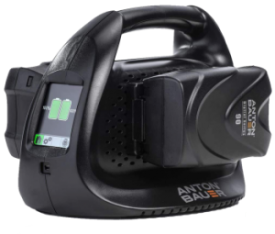
Anton Bauer Power Solutions
Anton Bauer manufacture a wide range of professional camera batteries and fast chargers for use in both the broadcast and Cine worlds, all fitting ergonomically to the latest high-end cinematic rigs or shoulder-mounted ENG cameras to DSLR single camera operators.
You may not appreciate it, but good camera batteries can be the difference between having enough camera power to stay long enough on location to get the footage you require or to be going back to base, empty handed. Again, fast charging is also essential, so all batteries are fully charged before heading out again the next day.
Camera Lenses
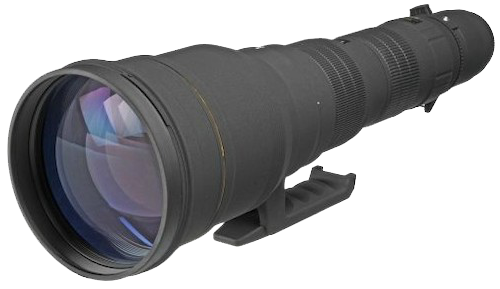
Sigma 300-800mm Super-telephoto zoom lens
The Wildlife Film Network are very pleased to have purchased a Sigma 300-800mm super-telephoto zoom lens. We are more than delighted with the quality and range of this lens. This lens covers the telephoto range from 300mm to 800mm, and by continuously varying the angle of view from 8.2° to 3.1°, the lens takes a lot of the work out of framing and composition.
The new multi-layer lens coating and lens design reduce flare and ghosting, whilst the two ELD (Extraordinary Low Dispersion) glass elements in the front lens elements reduce chromatic aberration to a minimum to ensure sharp, high quality images of high contrast. We have also fitted a polarizing filter in the 46mm drop-in filter holder in the rear part of the lens.
As focusing and zooming do not change the overall length of the lens, it is ideal to use with a professional follow focus system; and as the front of the lens does not rotate, it does not cause issues when using a professional Matte Box system.
The further addition of the 2x EX APO Tele Converter lens further increases the range of this lens from 600mm to 1600mm (which is massive) you can happily see that the quality of this lens is more than adequate for all your wildlife filming needs.
To give you a visual demonstration of the range of this lens we have added the 5 photos below. All of the photos were taken from the same position.
Photo 1: The filming position on the top of the cliff.
Photo 2: A photo taken down the length of the lens filming the Cormorants below, some 600 meters away.
Photo 3: A mid-way shot of the Cormorants sitting on the right hand end of the rock in photo no.2
Photo 4: A frame taken from the footage filmed of the Cormorants close-up, group of birds
Photo 5: A frame taken from the footage filmed of the Cormorants close-up, single bird
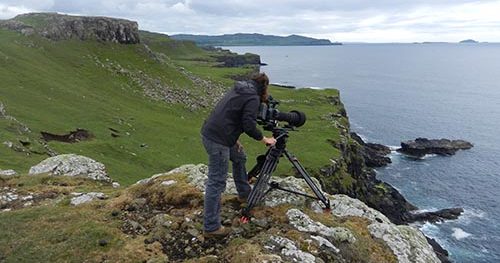
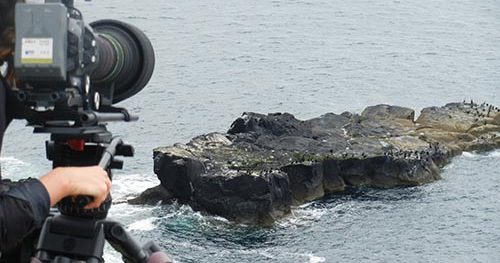
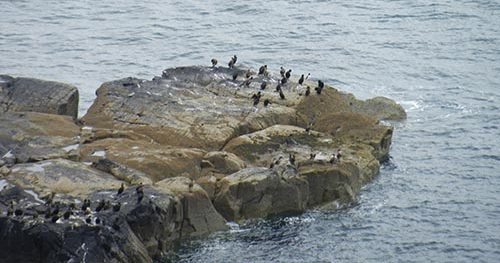
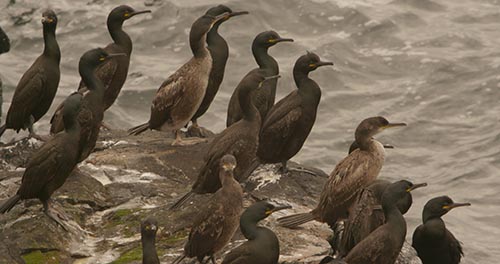
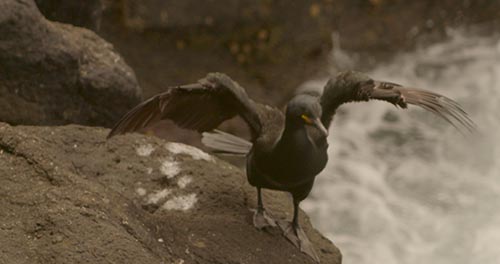
Sony G-series of lenses
Filming with Sony Cameras, it makes sense that we also film with Sony lenses.
The Sony G-series of lenses have been specifically designed for filming 4k images with a 35mm full frame sensor. We now have a selection of lenses in our arsenal ranging from 12mm to 600mm. All of our G-series lenses fit on both our Sony FS7 and our Sony A7Rii cameras.
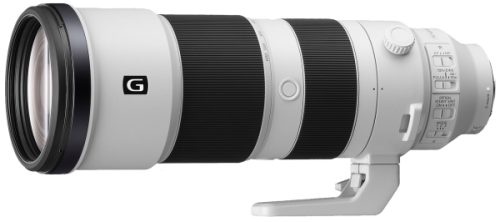
Sony 200-600mm Full Frame 35mm G-Series Lens
One of Sony´s latest addition to their stable of professional lenses is the Sony FE 200-600mm Full Frame 35mm G-series Professional Zoom lens (SEL200600G). Mounted on a Sony E-Mount system this lens is able to be used on both our Sony FS7 and our Sony A7Rii cameras.
Perfect for wildlife and more, this super-telephoto zoom can reach as far as 1200mm with Sony´s 2.0x teleconverter, with full G-series lens quality and AF performance. Aspherical and ED glass elements achieve superb resolution throughout the zoom range, while Sony´s Nano AR Coating cuts lens flare and ghosting. The bokeh is gorgeous, too.
Sony´s DDSSM (Direct Drive SSM) system has the power and precision needed to drive the lens´s mechanism for remarkably fast, accurate focusing. High positioning accuracy means that no movement is wasted. Pinpoint autofocus is achieved with blazing speed.
An 11-blade circular aperture mechanism adds to the beauty of the bokeh produced by this lens, making it possible to use the narrow depth of field available at super-telephoto focal lengths to produce striking images with deep, creamy lens bokeh. An internal zoom mechanism means that the length of the lens does not change while zooming, for stable handheld operation with consistent balance. A fluorine front element coating plus a dust and moisture resistant design ensure high reliability in challenging environments.
The Full Frame E-Mount specification comes with built-in Optical SteadyShot for smooth video recording. The suitability for filming has been further enhanced by inclusion of a linear focus actuator, giving fast, accurate and near-silent operation. Optical quality is assured by use of four aspherical and two ED (Extra Low Dispersion) lens elements, giving both sharp and colour-accurate results.
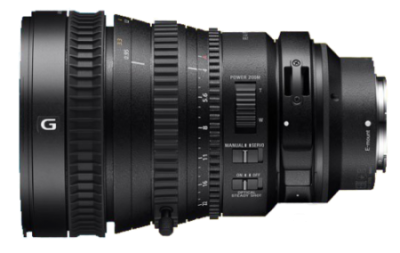
Sony 28-135mm Full Frame 35mm G-series `Cine´ Lens
For closer subjects, interviews and landscapes, we use the Sony FE PZ 28-135mm Lens. Designed to satisfy 4K production requirements, the lens covers wide-angle to short-telephoto perspectives while adding many features for your full-frame 4K camera system. Featuring a powered zoom control with a variable speed capability, whilst Iris function is also designed to be smooth and silent for cinematography demands
Angle of view variations while focusing (breathing) and axial displacement while zooming have been reduced even further while the five aspherical elements and three ED elements work even harder with their advanced multi-coating technology; designed to minimize image distortion and chromatic aberrations while contributing to sharper overall imagery with enhanced contrast and superior clarity
Independent control rings for zoom, focus, and iris (aperture) work perfectly with a professional 3-head remote control follow focus control system, and the constant f/4 maximum aperture offers consistent professional performance throughout the zoom range and is especially beneficial when working with greater zoom magnifications in low-light conditions.
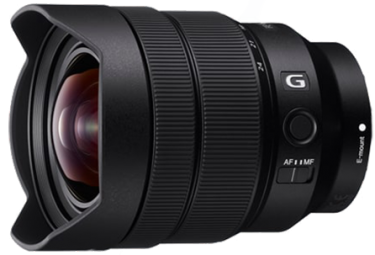
Sony 12-24mm Full Frame 35mm G-Series Lens
The Sony 12-24mm Full Frame 35mm F4.5 G OSS Professional Zoom lens (SEL1224G) is again mounted on a Sony E-Mount system is able to be used on both our Sony FS7 and our Sony A7Rii cameras.
This compact 12-24mm ultra wide-angle zoom lens features the shortest focal lengths available in any full-frame Sony E-mount zoom lens, with stunning corner-to-corner G Lens resolution at all apertures, the lens with outstanding mobility and quiet, fast, precise autofocus is an excellent choice for filming dynamic landscapes.
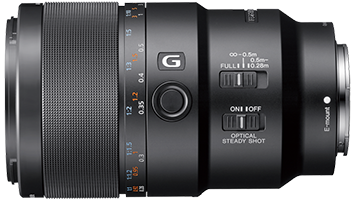
Sony Full Frame 35mm G-Series `90mm Macro´ Lens
For those of you who like even closer subjects such as bugs, insects, flowers etc. we have now added a Sony FE 90mm macro Lens to our catalogue. Designed to satisfy 4K production requirements on both the Sony FS7 camera and the Sony A7Rii camera, the lens is designed to get crisp, clear images of very small subjects without having to be so close to them they are disturbed.
Again as with all Sony G-Series lenses the angle of view while focusing (breathing) and axial displacement have been reduced even further whilst the internal elements work even harder with their advanced multi-coating technology; this is all designed to minimize image distortion and chromatic aberrations while contributing to sharper overall imagery with enhanced contrast and superior clarity.
The single focus ring works silently and perfectly with a professional remote control follow focus control system, and the constant f/2.8 maximum aperture offers consistent professional performance throughout and is especially beneficial when working with a smaller depth of field.
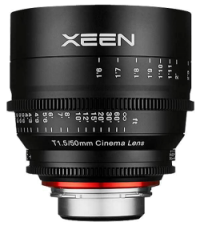
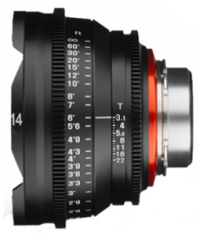
XEEN 50mm & 14mm Full Frame 35mm `Cine´ Lens.
The XEEN 50mm T1.5 Cine Lens:
Purchased specifically for use with our Sony FS7 camera whilst mounted on our full-body-rig stedicam, the XEEN 50mm T1.5 wide lens gives a true representation of the view seen from the human eye, whilst the T1.5 speed of the lens make it great to use in low light & with a small depth of field.
The XEEN 14mm T3.1 Cine Lens:
This lens offered the same manufacturing and production qualities of the XEEN 50mm lens above, only with a much wide viewing angle.
XEEN lenses are a range of professional video cinema lenses in the professional lens market. Their lenses deliver superior optics, with bright apertures and outstanding optical performance for 4K.
Audio Equipment
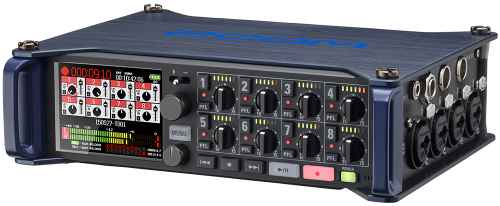
Zoom F8 Audio Field Recorder:
The Zoom F8 is our main audio recording device. The F8 is an extremely versatile audio recording unit. In recent years advances in video have made film making accessible to creators everywhere, but the accessibility of professional audio devices has just not kept pace. Audio field recorders, with essential features such as time code, have been financially unobtainable for most until now.
The F8 is made for serious filmmakers and sound designers, with 8-input/10-track recording, super low-noise preamps, and support for 24-bit/192kHz audio, the F8 captures the highest-quality audio. Not only is the F8 versatile and feature rich, it is the smallest field recorder with eight XLR combo inputs ever made. Weighing just 2.1 pounds, its aluminium chassis is both rugged and durable.
The F8 is also the audio first field recorder to come with wireless Bluetooth control. The F8 provides 8 discrete inputs with locking Neutrik XLR/TRS combo connectors. Each input has a dedicated gain control knob, a 6-segment LED level meter, and Record Ready and PFL switch. The onboard mixer enables flexible signal routing from all inputs to all outputs, either pre- or post-fader, with user-adjustable level, pan, and input/output delay.
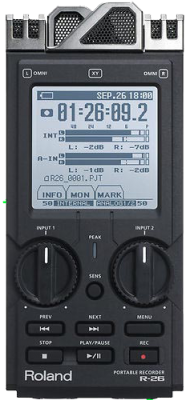
Roland R-26 Field Recorder:
In the field we also use the Roland R-26 Field Recorder. This small hand held recorder has 6 individually switchable microphone inputs, omni and directional mics and a very simple user interface running on a easy to read touch screen, this is a very user friendly unit to use.
Simple it may be, but basic it is not. The R-26 is a fantastic piece of kit when it comes to recording sound. The straight forwardness of the system is only outdone by its ability to record clean and pure audio in even the windiest of locations.
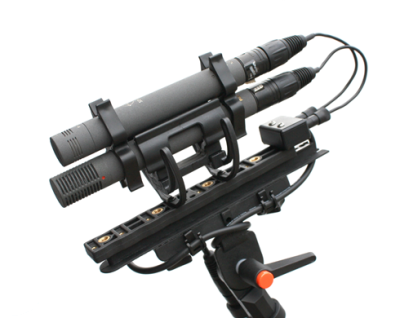
Sennheiser K-6 Modular Microphone:
Sennheiser manufacture the best broadcast standard audio microphones in the business, so naturally, it is these we use.
The K-6 modular system is a versatile and adaptable interchangeable microphone system that allows the user to change the ‘heads’ (ME62, ME64,ME66, ME67 etc.) on the microphone without having to carry multiple microphones out on location; therefore saving valuable weight and space.
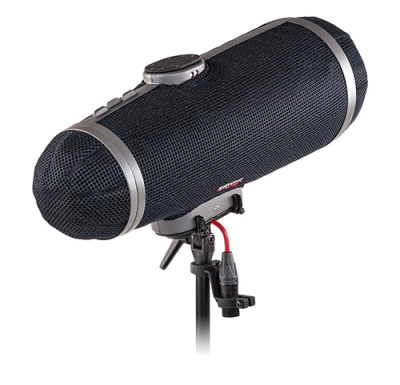
Rycote Windshields:
Naturally out on location the wind factor is one of the largest concerns when recording any type of audio. Wind noise is a load of low rumbling that completely destroys your audio, and is impossible to remove fully and cleanly in post-production. Unfortunately the faster the wind blows, the louder the effect is, and it takes no more than a 10 mph wind to make your audio unusable.
Rycote manufacture by far the best windshields in the broadcast television and cinema industries, and therefore these are the windshield of choice for the Wildlife Film Network. We have a Rycote Softee, Supershield and the new Cyclone.
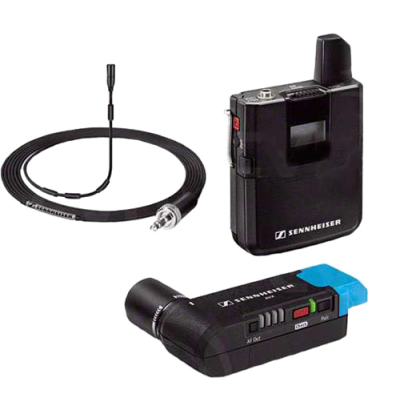
Sennheiser AVX-MKE2 Radio Mic Systems:
The Sennheiser AVX-MKE2 system is absolutely fantastic when it comes to recording a presenter on location. The miniature mic clips directly to the lapel of the presenter, with the radio receiver plugging directly into an XLR socket in the side of the camera or audio field recorder… Absolutely no wires or noise !
This gives you amazing flexibility allowing you to keep the input volume of the omni–directional microphone really low so you only record the presenter´s voice without any of the surrounding background audio.
We have 3 of these units – Unit 1, for the interviewer; Unit 2, for the interviewee; Unit 3, for the overhead boom mic etc. permitting maximum recording performance whilst out on location, in any location.
Editing Equipment
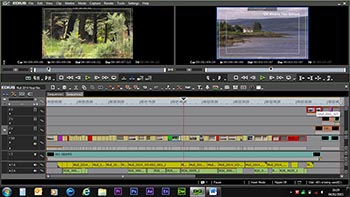
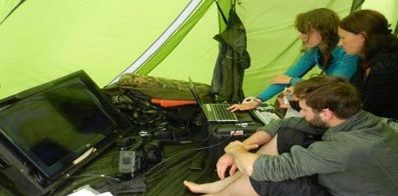
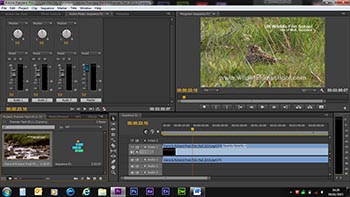
Apple Mac Book Pro editing laptop
For editing out on location we use the Apple Mac Book Pro editing laptop. This is an extremely powerful laptop that has been designed specifically for editing 4K video on the move.
We use both internal and external raid storage systems required to store the massive amount of footage/data filmed whilst out on location – to put this into perspective; at full resolution and bitrate, the Sony FS7 filming in 4K will generate 75 megabytes of data per second, or 4½ gigabytes per minute!
But do not worry, to store all the footage filmed, we have a bank of 3 inter-connected LaCie 12TB Thunderbolt™ hard-drives for editing back in camp; whilst out in the field we use LaCie’s 4Tb ‘Rugged’ Thunderbolt™ hard-drives to transfer/store footage onto.
To edit we use Adobe Premier Pro CC – Adobe Premier is an industry standard piece of software that is used thought the world. Other software available to use to edit your final film includes Adobe Photoshop (Text, Graphics & Stills) Adobe Audition (Audio Editing).



